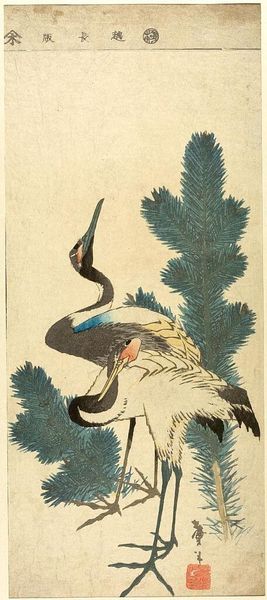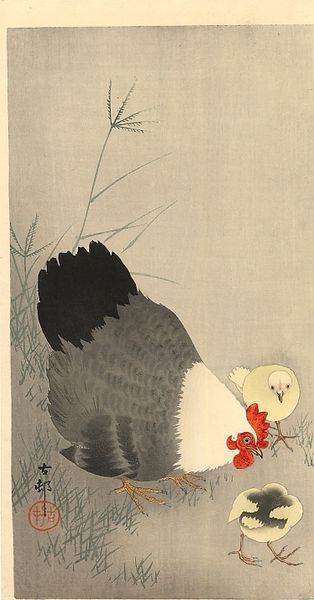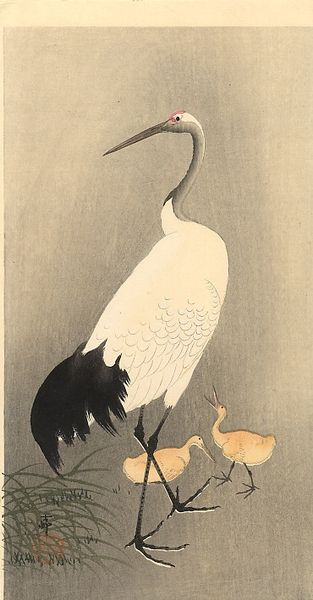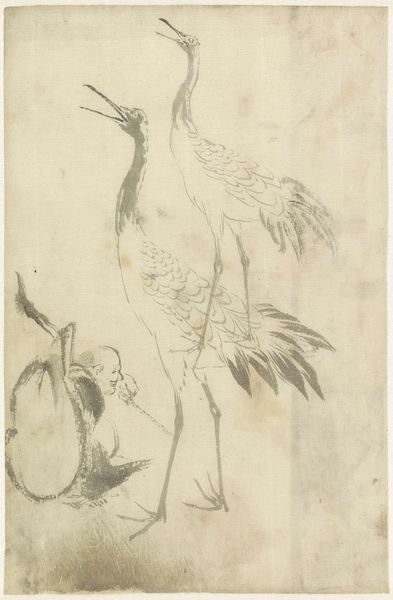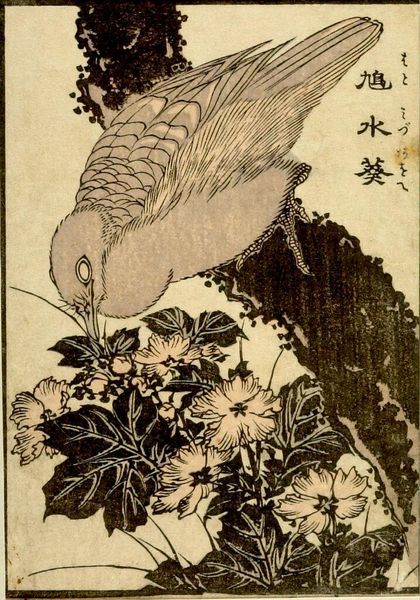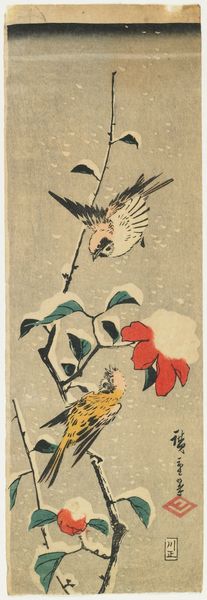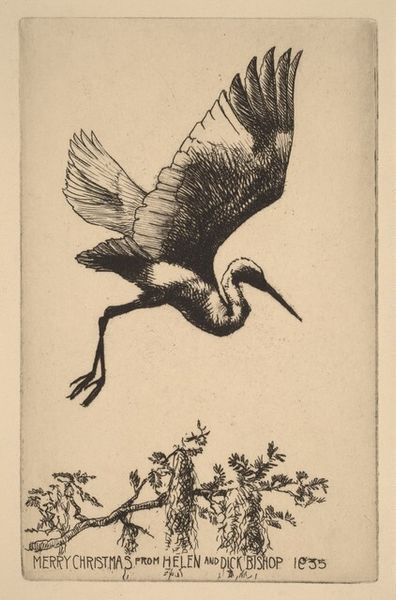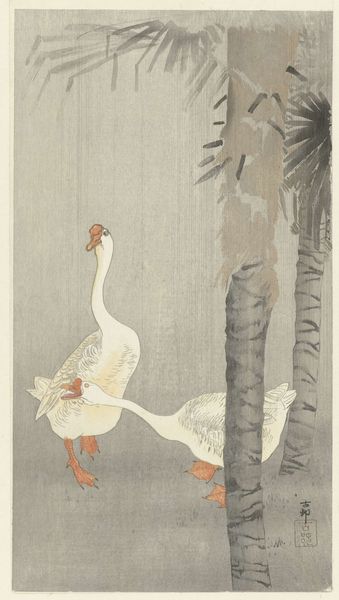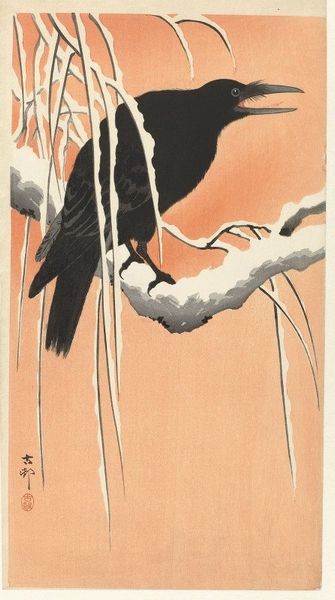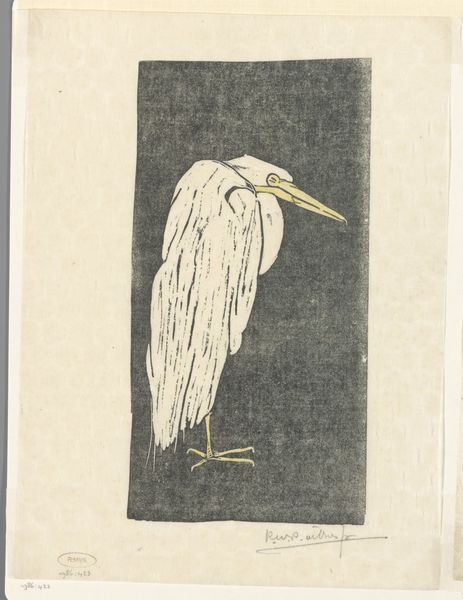
print, ink
#
water colours
# print
#
asian-art
#
ukiyo-e
#
ink
#
orientalism
#
line
Dimensions: 13 7/16 × 4 3/8 in. (34.2 × 11.1 cm) (image, aitanzaku)
Copyright: Public Domain
Curator: Looking at this woodblock print, I’m immediately struck by how Hiroshige employs negative space. The beige of the paper itself seems almost to participate as a visual element of the work. What do you think? Editor: Indeed. The almost bare background certainly focuses my eye on the tangible—the textures achieved with ink in 'Crane and Autumn Flowers', likely created around 1853, part of the Minneapolis Institute of Art's collection. Curator: Considering its place in Ukiyo-e tradition, do you see echoes of, say, socio-political subtexts common in art responding to rapid urbanization, gender dynamics, and emerging merchant class aesthetics of the period? Editor: Absolutely. Though deceptively simple, I would argue that this print isn't just about aesthetics; it's about production, too. The craft involved, the labor in carving the block... all reflect economic realities tied to ink production, paper quality, even access to tools. The color palette also seems economical: restricted in pigment variety which affects its reception. Curator: That restriction could certainly challenge the romantic Orientalism, forcing a modern viewer to confront the very labor conditions and historical context. Editor: Precisely. How does its commodification affect meaning? Whose consumption drives production here, shaping cultural narratives about both the bird, the botanicals, and, let’s face it, the exotic "Orient" for the European art market. The social hierarchy that comes along. Curator: This print does challenge any passively consumption. Instead, its stark beauty almost forces a reckoning. Do we consider the intersectional narratives surrounding its creation and circulation? How our interpretation influences those very systems that originally produced it? Editor: To really connect to this artwork we need to look beyond mere aesthetics and see the intricate dance of social class, craft, and market forces which brought such delicate balance into existence, for a potentially wide, even global, audience. The simple presentation hints at the huge complexity within its existence. Curator: That layered approach really elevates appreciation beyond visual interest; there's so much complexity behind it! Editor: Couldn't agree more. Let’s consider how that meaning evolves for different hands holding it through the ages.
Comments
No comments
Be the first to comment and join the conversation on the ultimate creative platform.

